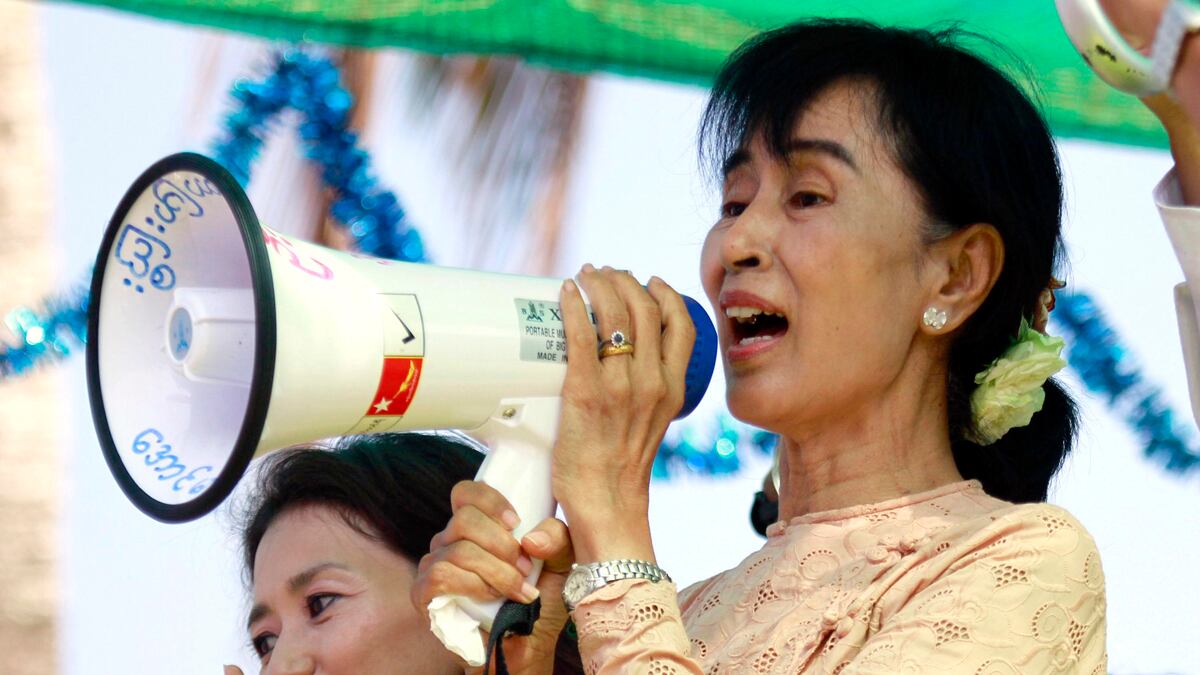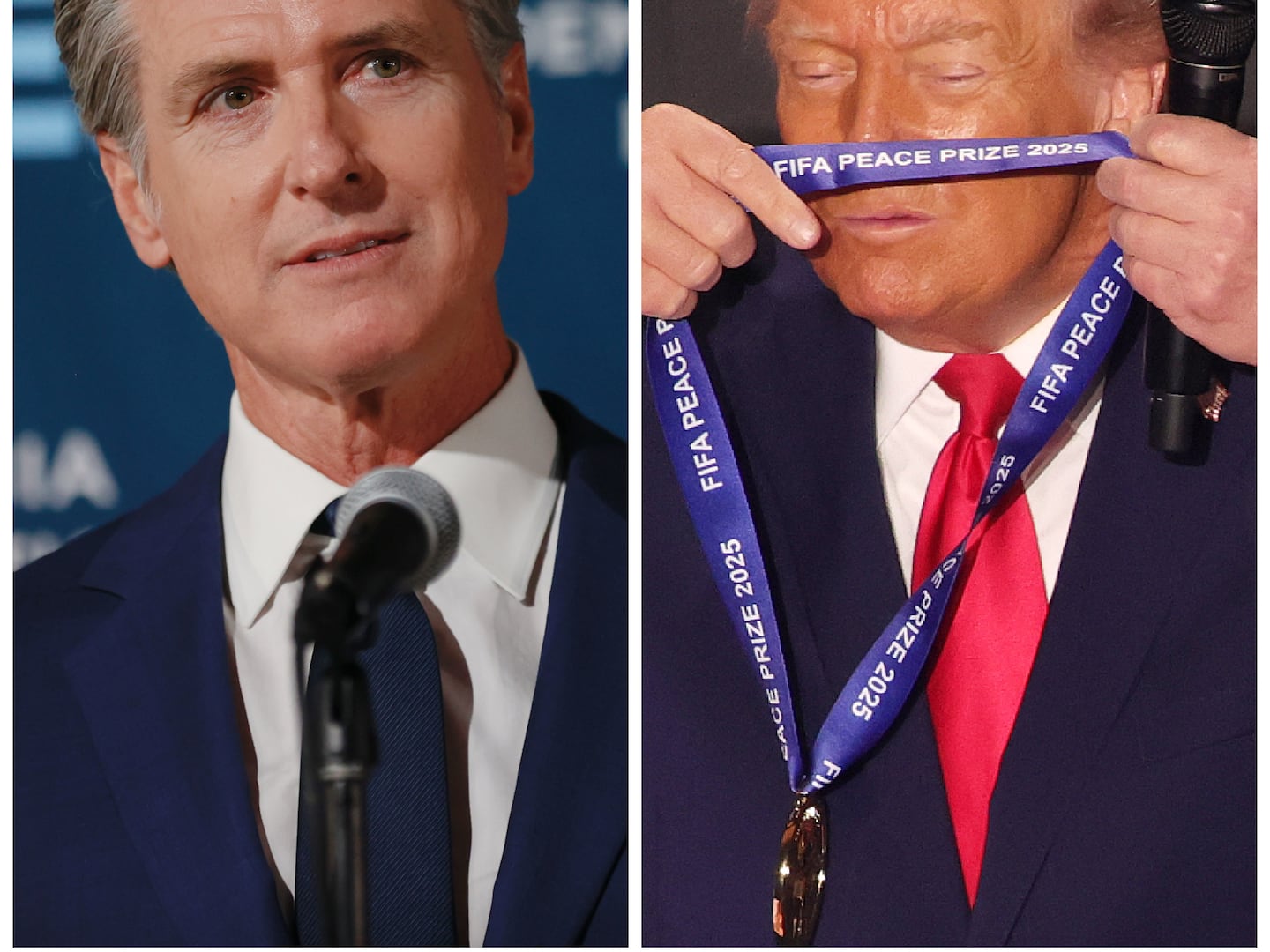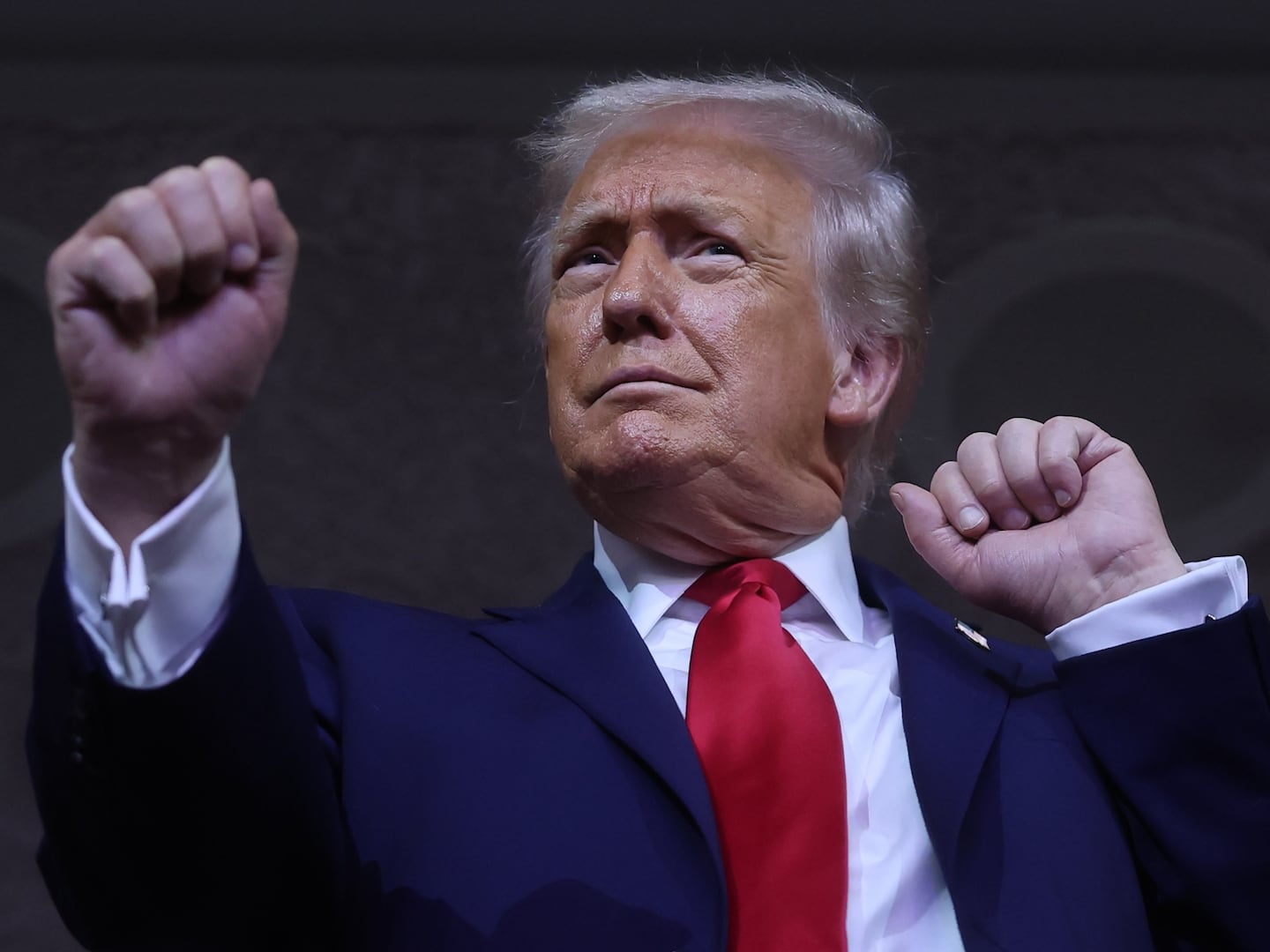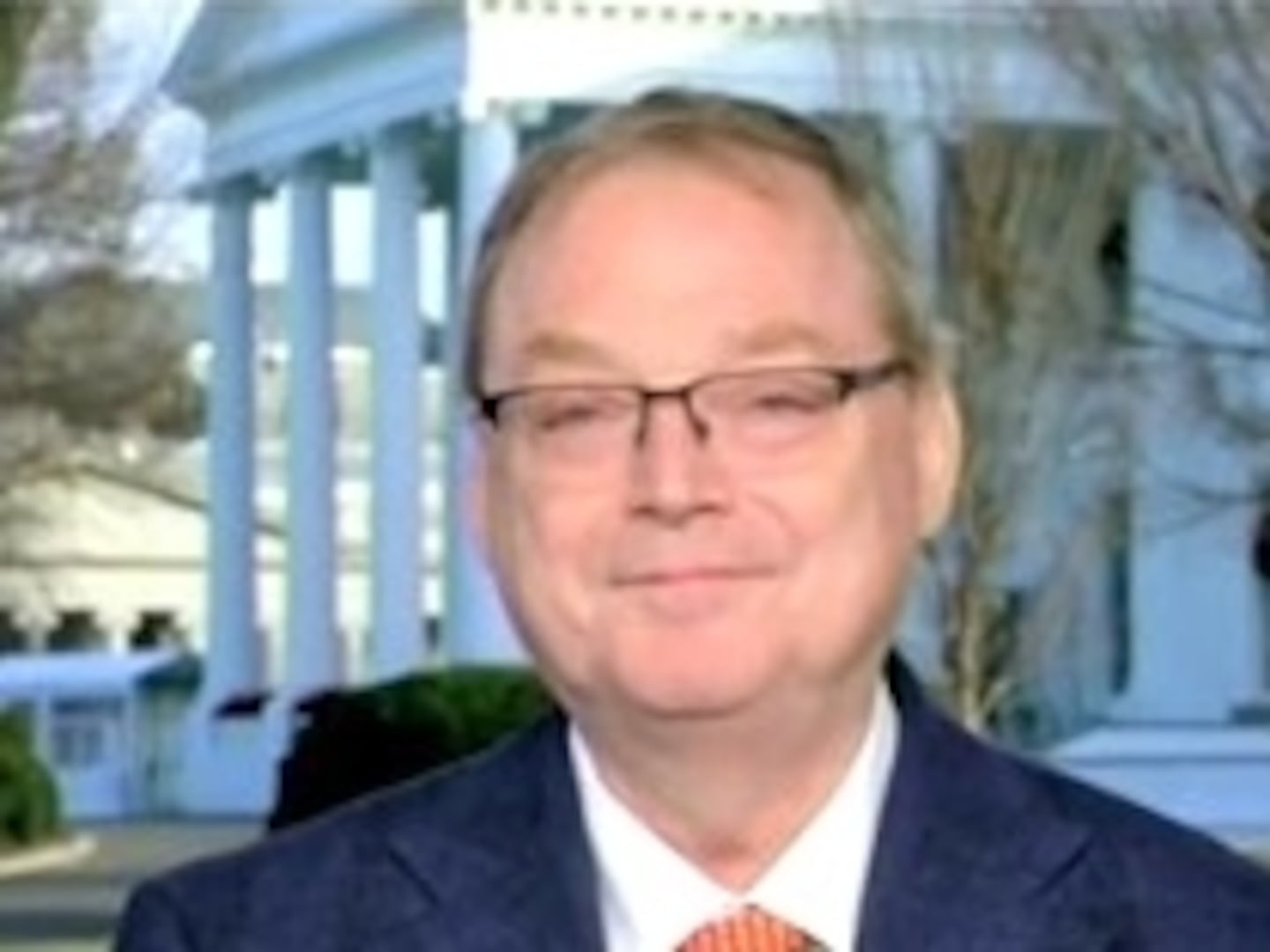Aung San Suu Kyi marked a thunderous entry into official Burmese politics on Sunday, 24 years to the day after flying into Rangoon in 1988 as a democratic revolt against military rule began to spread.
The official results will not be known for a week, but supporters claim she won 90 percent of votes polled in her constituency of Kawhmu, a dirt-poor township south of the old capital, Rangoon, that was severely battered by Cyclone Nargis in 2008. They also report that her party, the National League for Democracy, won at least 40 of the 44 seats contested in the by-election.
Suu Kyi has been a symbol of the opposition to military rule since making her first public speech in August 1988, but she was persistently marginalized by military rulers terrorized by her popular appeal and her links to the West, where she lived after going to study at Oxford in the 1960s. She was first put in house arrest in July 1989 and spent more than 15 years locked up in her crumbling family villa before being released for the fourth time in November 2010.
The daughter of Aung San, the man who created the Burmese army and was in line to become the first prime minister of independent Burma when he was assassinated in 1947, she has been barred from running for public office until now. In a general election in 1990, her party won a landslide victory, but she was not allowed to stand as a candidate because of her marriage to an Englishman. The regime refused to recognize her party’s win, and many of the M.P.’s-elect were jailed or forced into exile.

The following year Suu Kyi was awarded the Nobel Peace Prize—it was collected by her husband, Michael Aris, and their two sons, Alex and Kim, from whom she was forcibly separated for many years when the regime refused them visas—but the Burmese regime refused to mollify its position, keeping her detained until 1995.
It is only in the past eight months that Burma has shown signs of real change, following an invitation to Suu Kyi by the new head of state, President Thein Sein, to a one-on-one meeting in Naypyidaw, the new capital, on Aug. 19, 2011, followed by dinner with him and his wife. It was the first time Suu Kyi had been honored in such a simple and personal way by a senior regime figure.
Like his predecessors, Thein Sein was a career army officer, but unlike many others, it was said, he was scrupulously honest. He was prime minister before becoming president, and he seems to have appreciated that the only way to improve relations with the West—leading to the removal of sanctions—was to begin the rehabilitation of the woman who had become world famous for her courageous defiance.
Suu Kyi and Thein Sein established a relationship of mutual trust that resulted in a flurry of reforms and other gestures aimed at the democratic opposition and the outside world. Political prisoners were released, including all the most famous ones; censorship was relaxed, allowing Suu Kyi’s image and her words to appear in public for the first time since 1990; labor unions were legalized; and a controversial Chinese-backed dam was suspended. Quite rapidly the tenor of life in Burma has changed, and an exhilarating sense of freedom and release has infected the towns and cities.
Of course many more deeply rooted problems have not changed at all: the economy remains stuck in corruption and stagnation; education and health, starved of funds for two generations, remain primitively inadequate; and although ceasefires were announced on the borders, the insurgencies that have been raging practically since independence remain to be resolved. Above all, despite Thein Sein’s evident good intentions, the military remains in control of Burmese politics behind the scenes. Most senior ministers are former generals, unelected officers occupy by right 25 percent of parliamentary seats, and the Defense Council, successor to the councils that have ruled the country since 1989, remains the last arbiter of power. These arrangements are guaranteed by the Constitution.
The challenge for Suu Kyi and her party now is how to manage the vastly inflated hopes and expectations of her supporters—and what to try to change first. Should Suu Kyi, for example, throw herself into improving the lot of her poor constituents in Kawhmu? Or should she try to get a consensus to amend the Constitution, which would mean getting the support of some of the officer-M.P.’s, as well as all the rest?
If, as has been hinted, the president offers her a Cabinet job—the suggestions have ranged from education or health minister right through to foreign minister or even prime minister—should she seize it, in the hope of being able to accomplish a great deal while her ally is still in the president’s chair? Or, as many have urged, should she restrict herself to the role of an opposition M.P., no matter what temptations may be offered her, and accomplish what she can from the back benches?
Whatever decisions she takes, there is no doubt that Aung San Suu Kyi is embarked on the most fascinating and, at the same time, most perilous passage of her whole amazing career. She never asked or wanted to be anybody’s “icon”—all she wanted to do, from an early age, was to change her country for the better. Now, at last, she has the chance.






